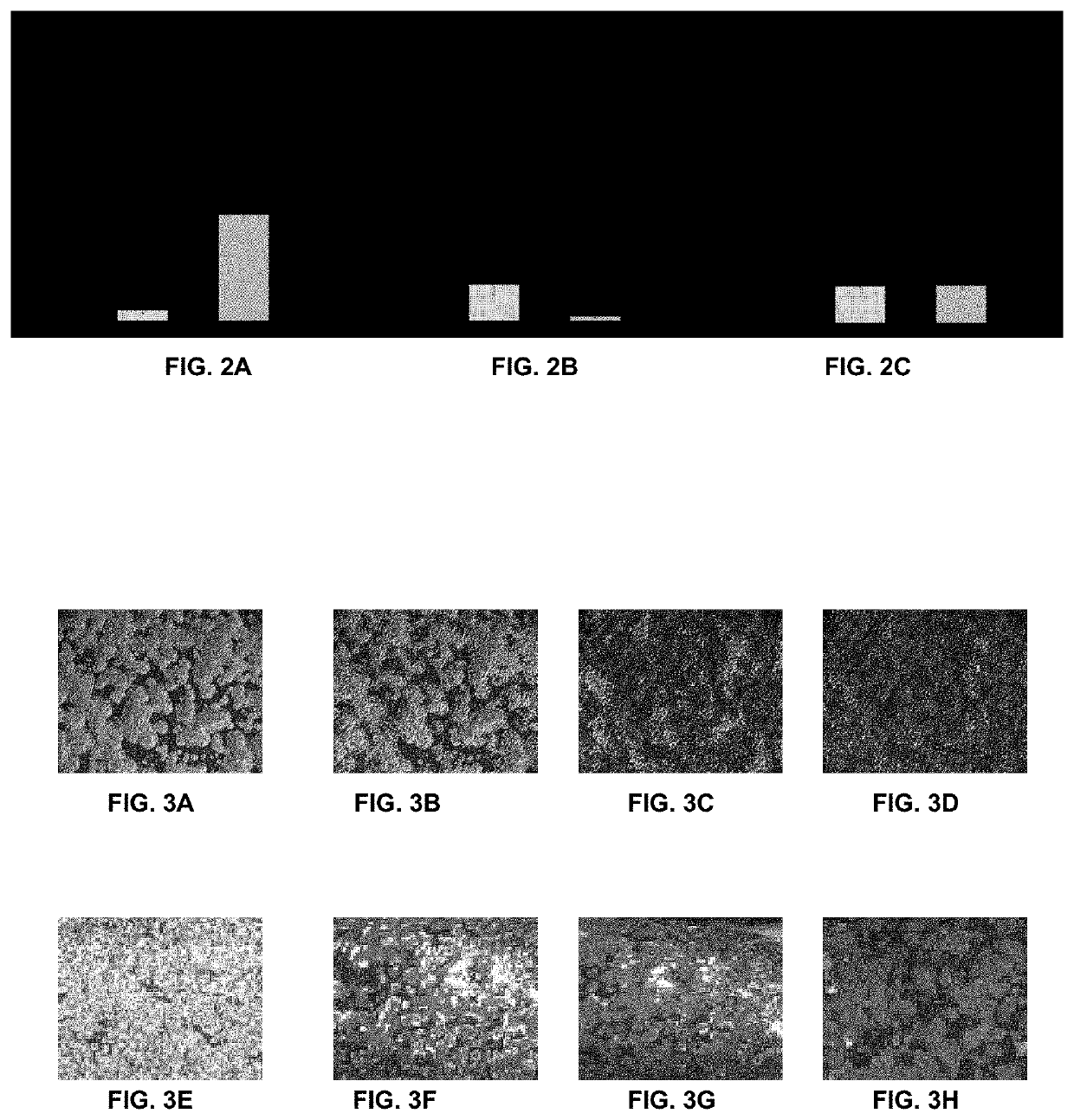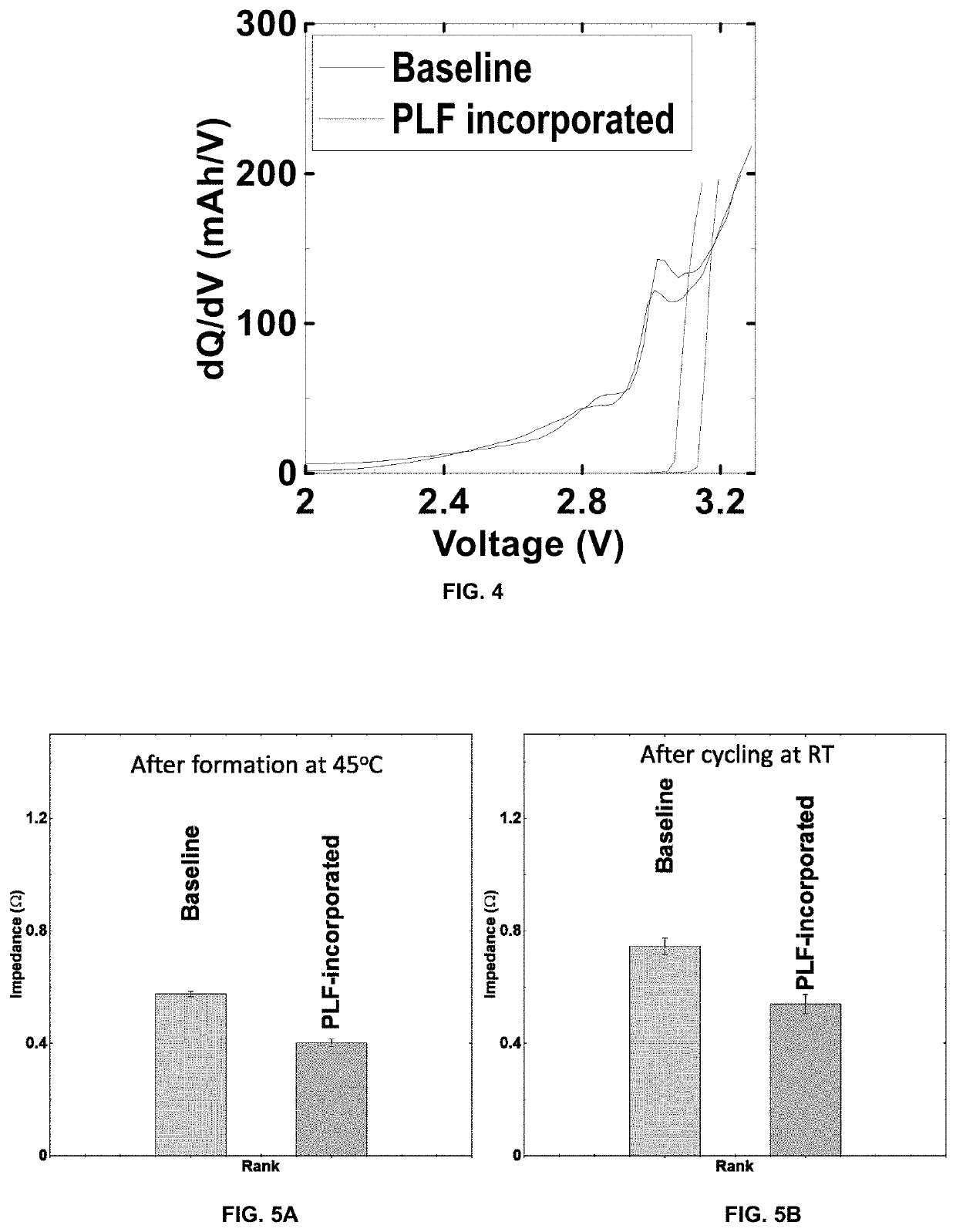Fast charging pre-lithiated silicon anode
- Summary
- Abstract
- Description
- Claims
- Application Information
AI Technical Summary
Benefits of technology
Problems solved by technology
Method used
Image
Examples
example 1
[0077]17 g artificial graphite, 2 g SiO and 12.5 g of 8% styrene butadiene rubber in toluene are combined with 8.5 g toluene in a 250 ml polypropylene cup. The mixture is blended at 1000 rpm for 3 minutes in a THINKY ARE 250 planetary centrifugal mixer creating a uniform anode slurry. 0.85 g of stabilized lithium metal powder (SLMP®, FMC USA Lithium Corp.) or PLF with equivalent lithium metal content is added to the slurry and blended in the THINKY for 30 seconds at 1000 rpm. The resulting slurry is coated on copper foil using a 6 mil doctor blade. The solvent is dried using a forced hot air dryer at 110° C. until all solvent is removed. The dried electrode is pressed using at 30 μm gap roll press. A 4 cm×4 cm piece of the pressed electrode is placed into a sealed pouch with 1 g of 1M LiPF6 in EC / DEC 1:1 electrolyte and observed under a digital microscope. After diffusion of lithium there is an increase in porosity of 33.6% to 35.2% (an increase of about 5%). This is estimated based...
example 2
[0078]Anode electrodes from LiFun Technologies are used to test the effectiveness of printable lithium formulation to increase first cycle efficiency (FCE). Electrodes containing 10% SiO are used for testing. The formulation for 10% SiO anode electrode comprises 85.32% artificial graphite+9.48% SiO, 3.8% binder (CMC+SBR) and 1.4% carbon black. The loading of the anode materials is 8.2 mg / cm2 and the press density is about 1.5 g / cm3. The size of the electrode is 7 cm×7 cm. This anode electrode has an FCE of 85% when tested in a half cell with a lithium metal counter electrode.
[0079]Printable lithium formulation (PLF) containing 6 mg of stabilized lithium metal powder (SLMP®, FMC USA Lithium Corp.) is applied to the surface of the 10% SiO electrode. After drying and pressing, the electrode is assembled into a half cell in the pouch cell format with lithium metal counter electrode using 1M LiPF6 in EC:FEC:EMC:DMC 1:1:2:6 (volume ratio) electrolyte. The cell is tested with the following...
example 3
[0080]Baseline (BL) and cells containing PLF-incorporated electrodes single-layer pouch cells are made with NMC 811 cathode and Graphite −10% SiO with Celgard 3501 separator. 1 g of 1M LiPF6 in 1:1:2:6 Vol EC:FEC:EMC:DMC electrolyte is used. Cells are cycled using the formation protocol of a 24-hour rest period at a temperature of 45° C., followed by charging at the constant current of 10 mA to 4.2V and then discharging at the constant current of 10 mA to 2.8V with a current cutoff of 5 mA. The cells are charged to 3.8V after formation step for impedance measurements. Following initial impedance test, the cells are tested for rate capability.
TABLE 2Impedance Measurements for PLF-incorporated and Baseline CellsImpedance MeasurementImpedance MeasurementCellafter Formationat 80% CapacityIDstep (ohm)Retention (ohm)PLF Cell -10.5020.447PLF Cell -20.4290.352PLF Cell -30.4370.343PLF Cell -40.4360.389PLF Cell -50.5100.555Baseline Cell -10.5720.525Baseline Cell -20.5340.476Baseline Cell -30....
PUM
 Login to View More
Login to View More Abstract
Description
Claims
Application Information
 Login to View More
Login to View More - Generate Ideas
- Intellectual Property
- Life Sciences
- Materials
- Tech Scout
- Unparalleled Data Quality
- Higher Quality Content
- 60% Fewer Hallucinations
Browse by: Latest US Patents, China's latest patents, Technical Efficacy Thesaurus, Application Domain, Technology Topic, Popular Technical Reports.
© 2025 PatSnap. All rights reserved.Legal|Privacy policy|Modern Slavery Act Transparency Statement|Sitemap|About US| Contact US: help@patsnap.com



